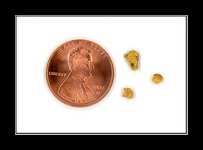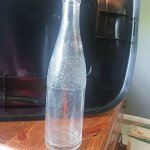Gold_Needle
Full Member
- Jun 21, 2005
- 133
- 1
Hello all!,
Well, for a few years I have tried to win a metal detector on some website's contest but without luck.
I just might have to go out and buy one if I want to do any hunting.
The good thing about waiting all this time and reading posts at various sites and forums is that I have learned there is no one "all" detector. Each is strong in some areas and not so strong in others.
What I would like to hunt for is "gold." The price of gold has made weekend adventures worthwhile. Just a few ounces a weekend makes it a very good year. Also, as I live near beaches I would also like to do some beach combing with the detector.
So, the question is which metal detector for hunting nuggets and placer gold and some beach hunting
I would want it to go into the water and hunt as well. Not planning on falling into the surf or stream, just want it to be able to be submerged and hunt and not get damaged.
If you need more information about what I have in mind please ask.
Now, which do you all think would be a good detector or a few detectors to consider??
Looking forward to hearing your ideas and thoughts,
Thanks,
Gold Needle
P.S. Is it too much to hope that a detector is good at gold hunting and also finding meteorites?
Well, for a few years I have tried to win a metal detector on some website's contest but without luck.
I just might have to go out and buy one if I want to do any hunting.
The good thing about waiting all this time and reading posts at various sites and forums is that I have learned there is no one "all" detector. Each is strong in some areas and not so strong in others.
What I would like to hunt for is "gold." The price of gold has made weekend adventures worthwhile. Just a few ounces a weekend makes it a very good year. Also, as I live near beaches I would also like to do some beach combing with the detector.
So, the question is which metal detector for hunting nuggets and placer gold and some beach hunting

I would want it to go into the water and hunt as well. Not planning on falling into the surf or stream, just want it to be able to be submerged and hunt and not get damaged.
If you need more information about what I have in mind please ask.
Now, which do you all think would be a good detector or a few detectors to consider??
Looking forward to hearing your ideas and thoughts,
Thanks,
Gold Needle
P.S. Is it too much to hope that a detector is good at gold hunting and also finding meteorites?
Upvote
0








